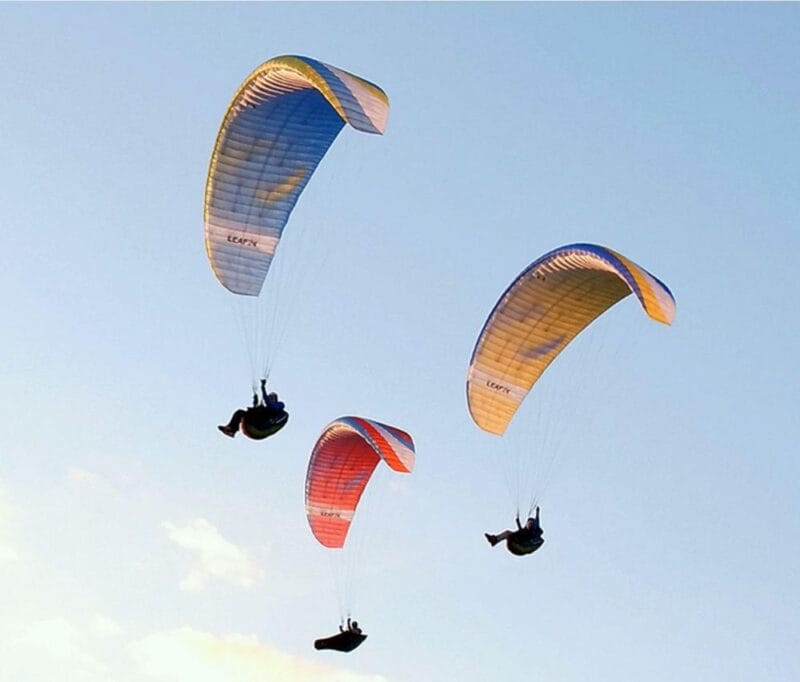
Is It Worth the Risk? How Safe Is Paragliding in 2025
Is It Worth the Risk? How Safe Is Paragliding in 2025 As you sit on the beach and look to

Paragliding is an outstanding recreational adventure sport, offering breathtaking views and adrenaline rushes. Once you get your first taste of flight, from that point on, you will always walk around with your eyes skyward, longing to go back there. Whether you have done this a hundred times, or it is your very first season, there are some risks involved with flying hundreds of meters above the ground. This is why safety precautions and associated preparation is a must. With that being said, if you are ready for an aerial adventure, then follow these essential guidelines so you can have a fun and safe time this paragliding season.
Your paragliding equipment is essentially what is going to keep you alive. So buying quality gear at a respectable paragliding shop and maintaining it is highly recommended. Though checking all your equipment (wing, lines and risers, harness, speed bar, and helmet), before each flight is ideal, one that you will undoubtedly want to pay close attention to is your reserve pack.
If you are an avid paraglider, then chances are your reserve parachute may contain trapped moisture, sand, or dirt, which could cause immense fabric damage. As a rule of thumb, you should have your reserve inspected and repacked annually. Generally, this costs less than $50 to have done professionally. By doing so, you will reduce depreciating quality, ensure lines are not tangled, and promote faster opening time.
The last thing you will want is to start your first flight of the season with a damaged paraglider that lands you in the hospital. Many things could contribute to unsafe conditions, such as glider age, UV exposure, change in wing shape, and tears. A professional should take a look at your paraglider and give you the green light (or not) on if it is ready to be used.
They will be able to determine any weak spots that could compromise your safety, such as poor porosity levels, damaged inner or outer core lines and any other deformities that could be a cause of concern. Even if there is nothing wrong with your glider, it is still wise to have it inspected regardless to be cautious.
You may be flying in the air, but your body will still have to be ready to handle the laborious aspects. You will need exceptional balance and leg muscle to take off and land, and solid concentration to stay focused. To prevent injury, ensure that you are in the right shape to handle this sport.
Focus on leg exercises, such as squats, lunges, calf raises, and core/balance exercises such as sit-ups, planks, and single-leg deadlifts. Furthermore, mental health is just as important. Practice mindfulness, implement memory practices and try out meditation, which is all linked to increased mental preparation and enhanced focus. Start exercising at least eight weeks before the season starts for maximum results.
Kiting is learning how to control your glider while you are on the ground. Knowing how to inflate, keep your glider overhead and bring it down safely is a ground handling essential. Before taking off, even if you have done it a hundred times before, practice before your first seasonal flight to reignite your second nature skillset to achieve optimal piolet safety.
To avoid damaging a new glider, practice with an older one and on smaller hills until you get comfortable with the concept and feel. It is also wise to try doing this in different wind conditions as well, so you cover all your basis for whatever your actual flight will entail.
By following this indispensable guide, you will surely have a much better paragliding experience overall this season. Not to mention, it will be a much safer one as well. Ensure that your body is ready to take on the challenge, you understand the basics to nail your first flight, and your paragliding gear and equipment are prepared for action. If you have taken the proper steps, then you can solidify your confidence that you will have a remarkable time.

Is It Worth the Risk? How Safe Is Paragliding in 2025 As you sit on the beach and look to

How Much Does a Paraglider Cost? A Realistic Breakdown for Every Budget Are you dreaming of taking off with nothing

Choosing the Right Reserve Parachute: A Comprehensive Guide Paragliding is an absolutely amazing experience! It is an exhilarating sport that
No account yet?
Create an Account